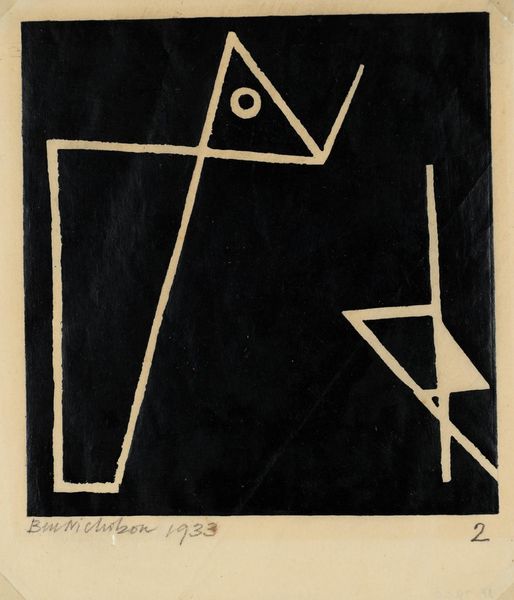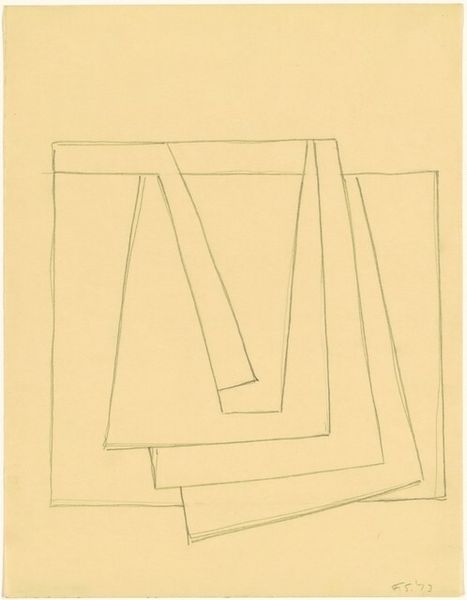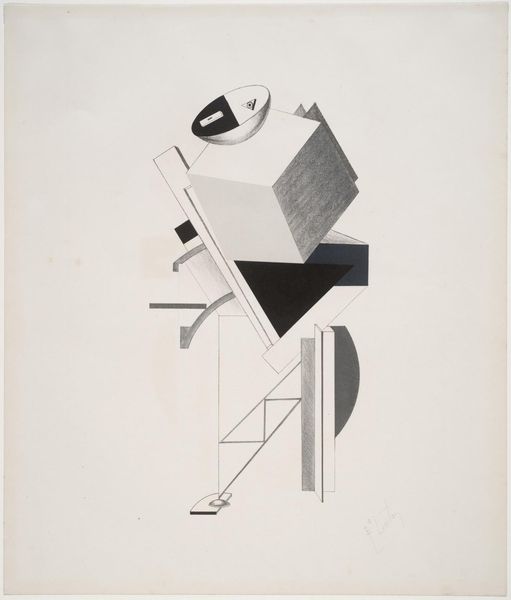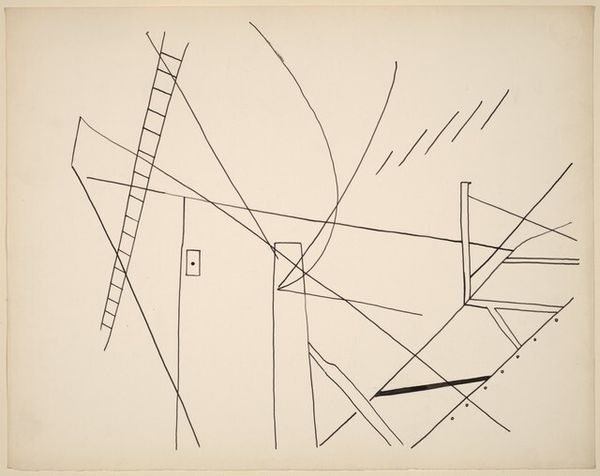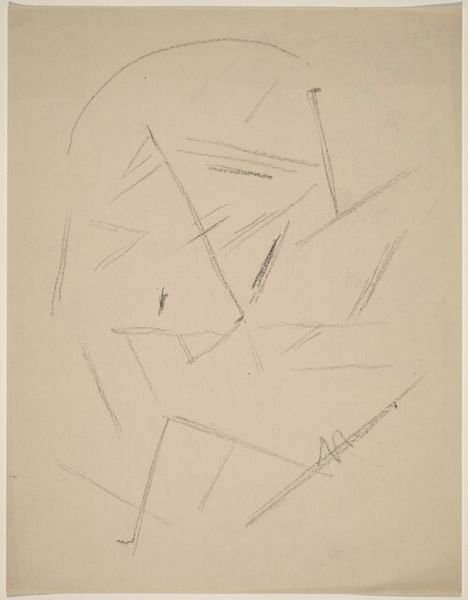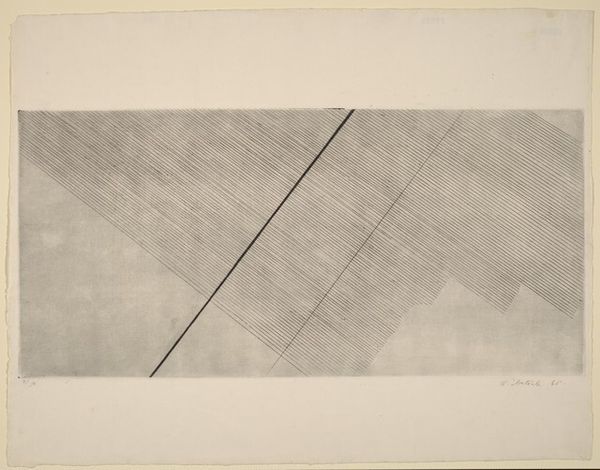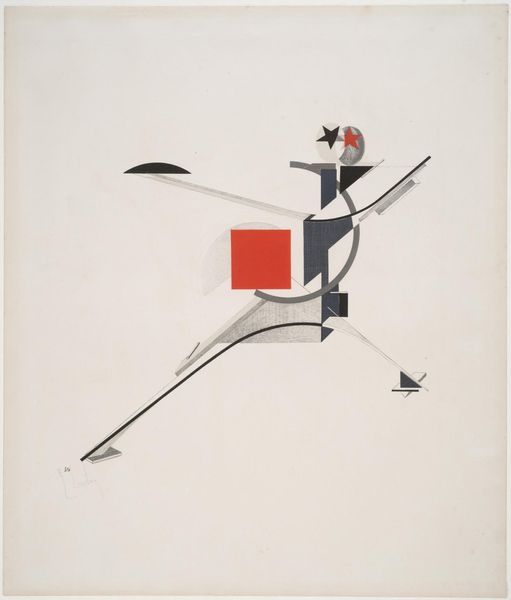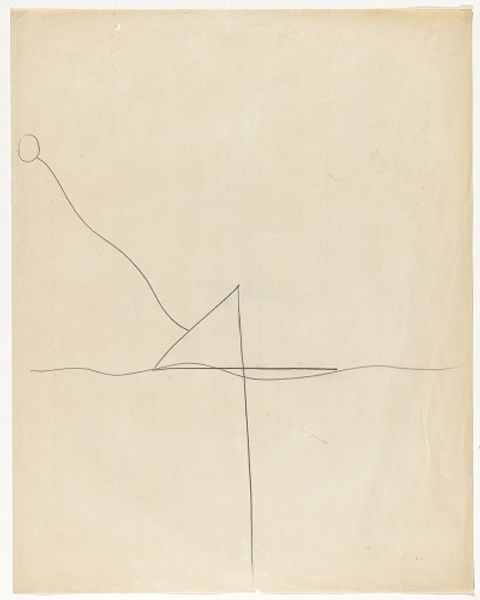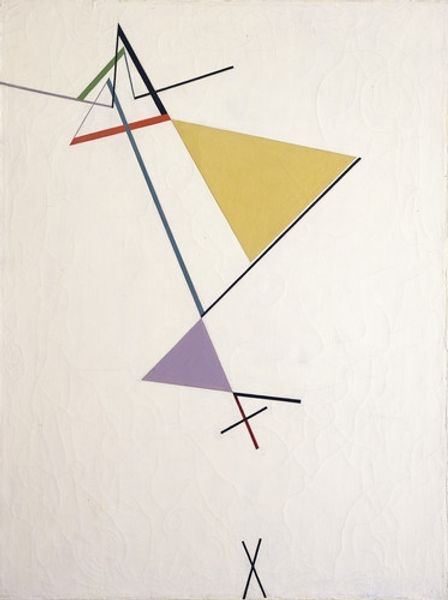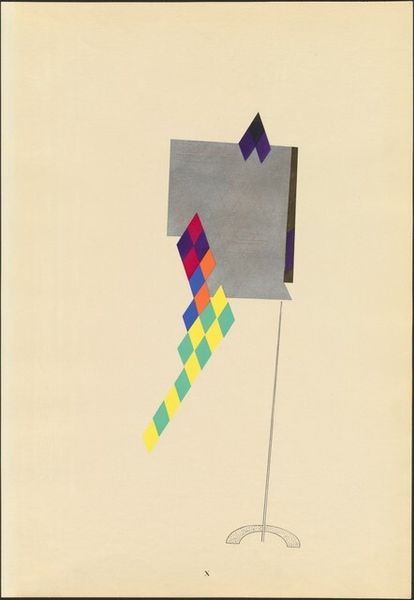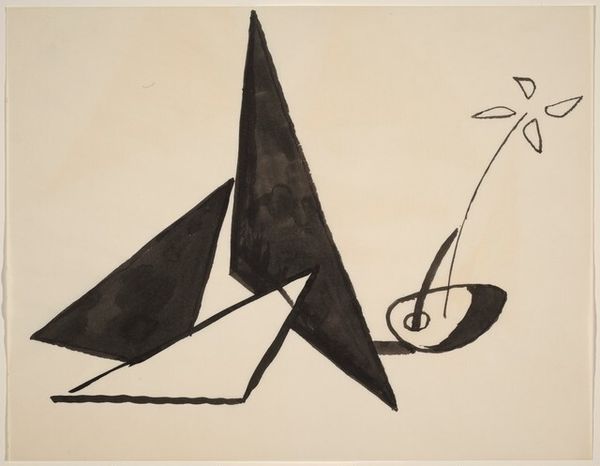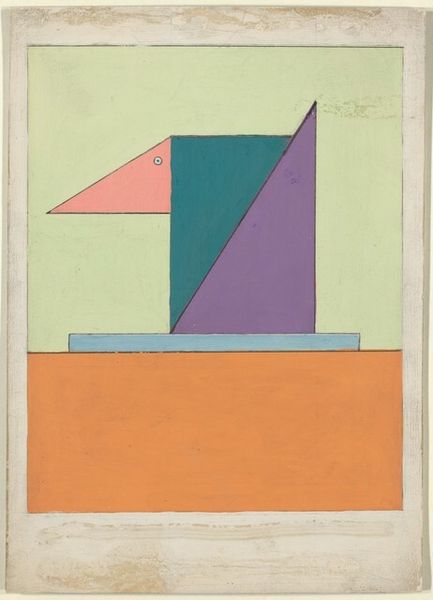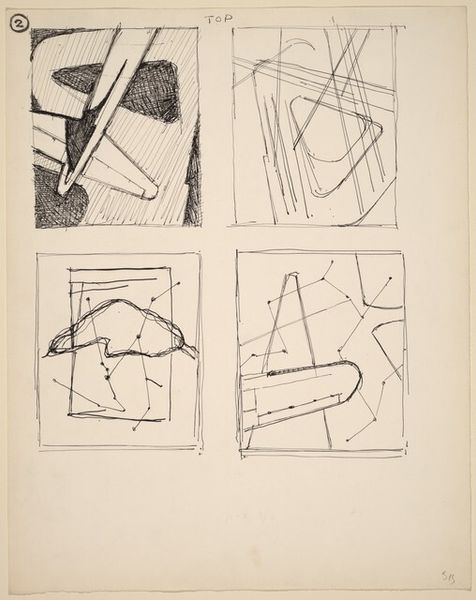
print, acrylic-paint
# print
#
acrylic-paint
#
geometric
#
geometric-abstraction
#
abstraction
#
line
#
modernism
Copyright: Richard Mortensen,Fair Use
Curator: Here we have Richard Mortensen’s "Composition (From the 'Nice' series)," a 1966 print employing acrylic paint. My first impression is that the cool tones give it an intellectual coolness, almost detached. Editor: Yes, "detached" feels right. It's striking how Mortensen creates such a minimalist statement with just lines and one solid shape. The asymmetry contributes to this detached affect, perhaps reflecting post-war European sentiments? Curator: Precisely. Formally, the interplay between the stark lines and that singular, bold triangle generates visual tension. The off-white background emphasizes the geometric forms, pulling them forward. Note how the lines extend beyond the implied edges of the larger implied geometric form. It seems intended to push the composition outside of its physical constraints. Editor: That tension seems to mirror broader societal unease of the era. There is an elegance to the work, of course, in its reduction to pure shape. But how does the title – specifically the parenthetical reference to 'Nice' – inflect your formal analysis? Given the charged social climate of the '60s, I can't help but wonder if that is somewhat sarcastic or subversive. Curator: An astute point! From my perspective, this sarcasm is unlikely and is meant to point toward Nice, France. The formal devices Mortensen uses creates dynamism, movement—qualities associated with that region’s history as a crossroads, a nexus of diverse cultures and aesthetics. He reduces complex concepts to elementary forms to address something universal. Editor: That reading adds layers. Knowing it could gesture toward Nice allows me to read the "detachment" instead as the serene distance of the bird’s eye view, seeing movements that aren't possible to observe from the street. But it still evokes complex reflections on cultural interchange during a volatile period. Curator: Agreed. What appears simple contains layers of nuanced formal relations and references, yielding continuous, stimulating analysis. Editor: Absolutely. It prompts questions that linger, inviting deeper examination of both artistic technique and the socio-political landscape of its time.
Comments
No comments
Be the first to comment and join the conversation on the ultimate creative platform.
